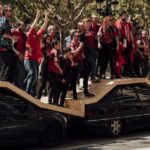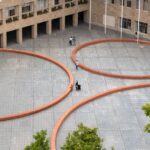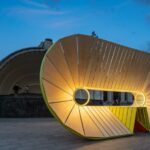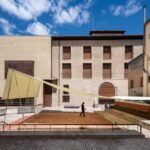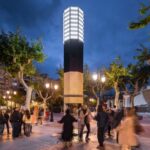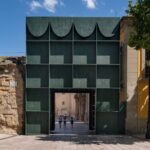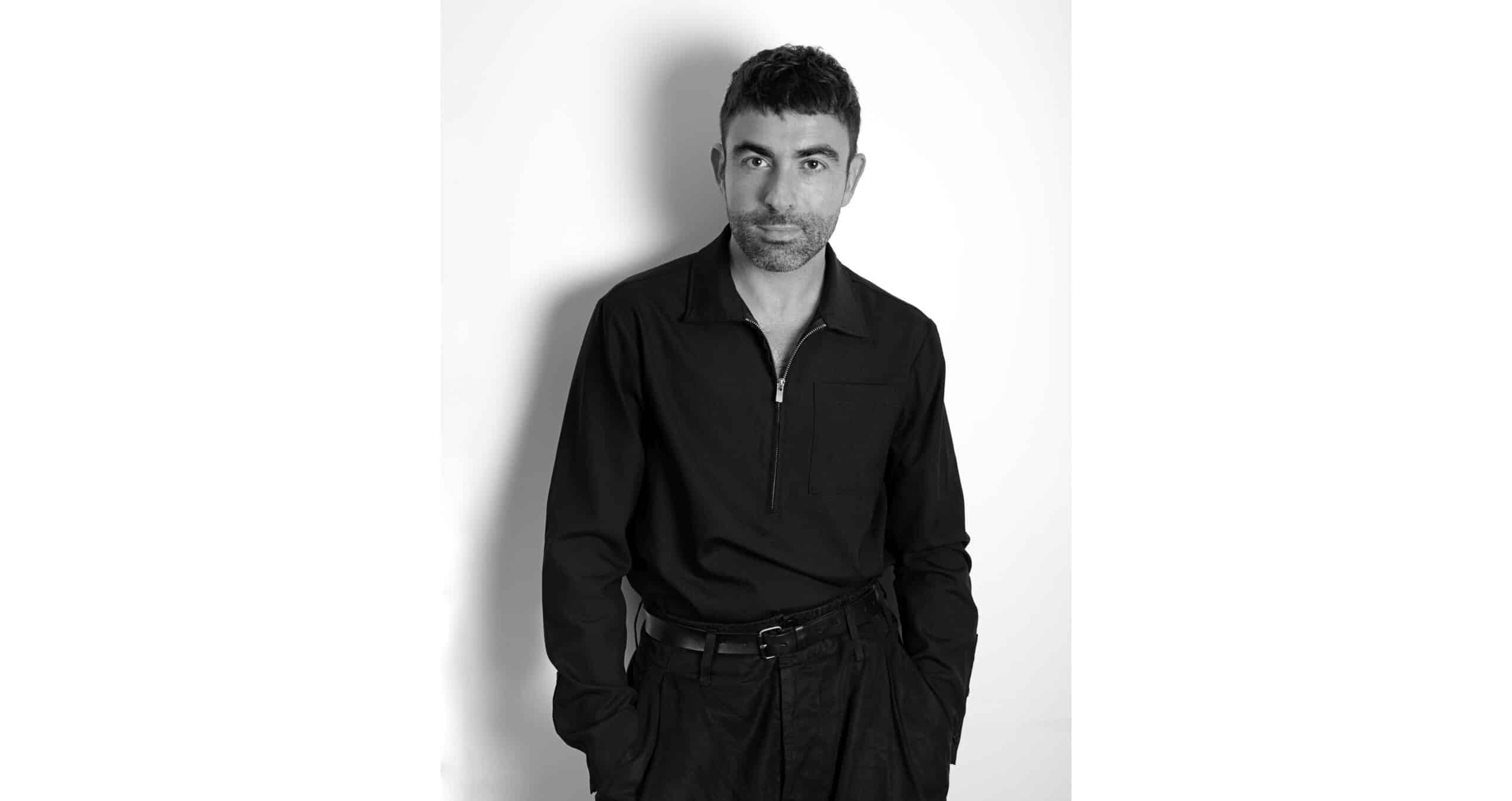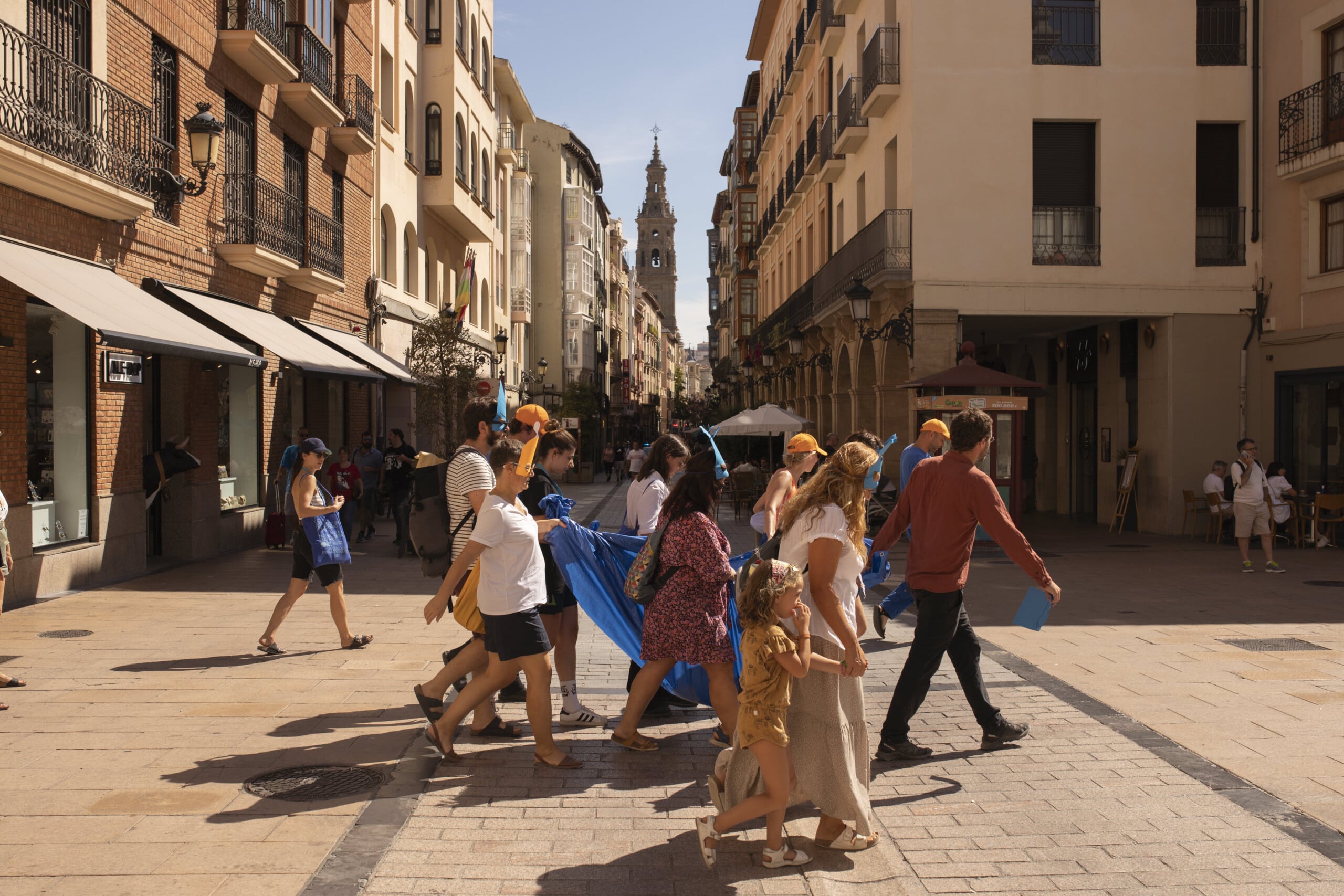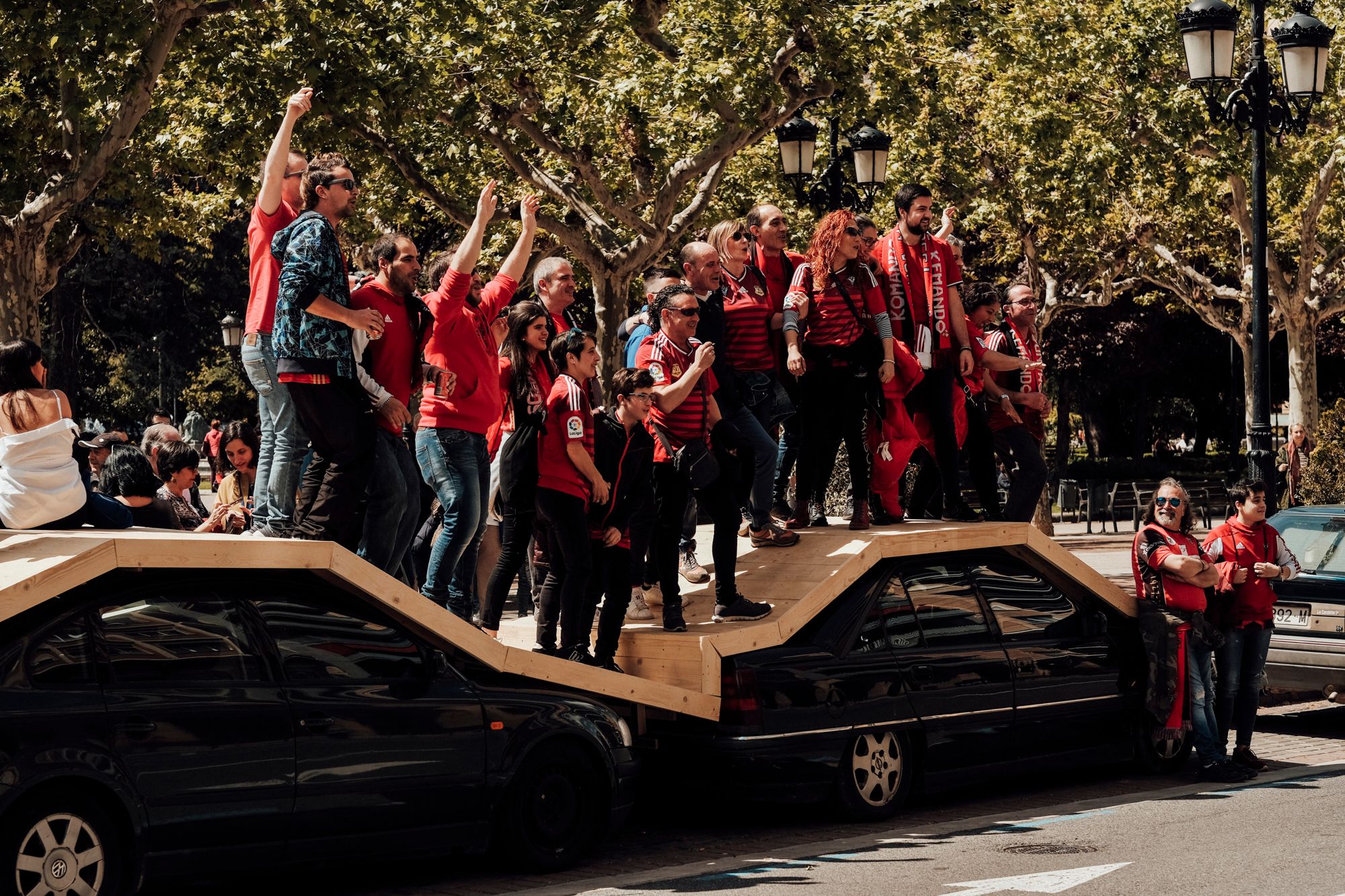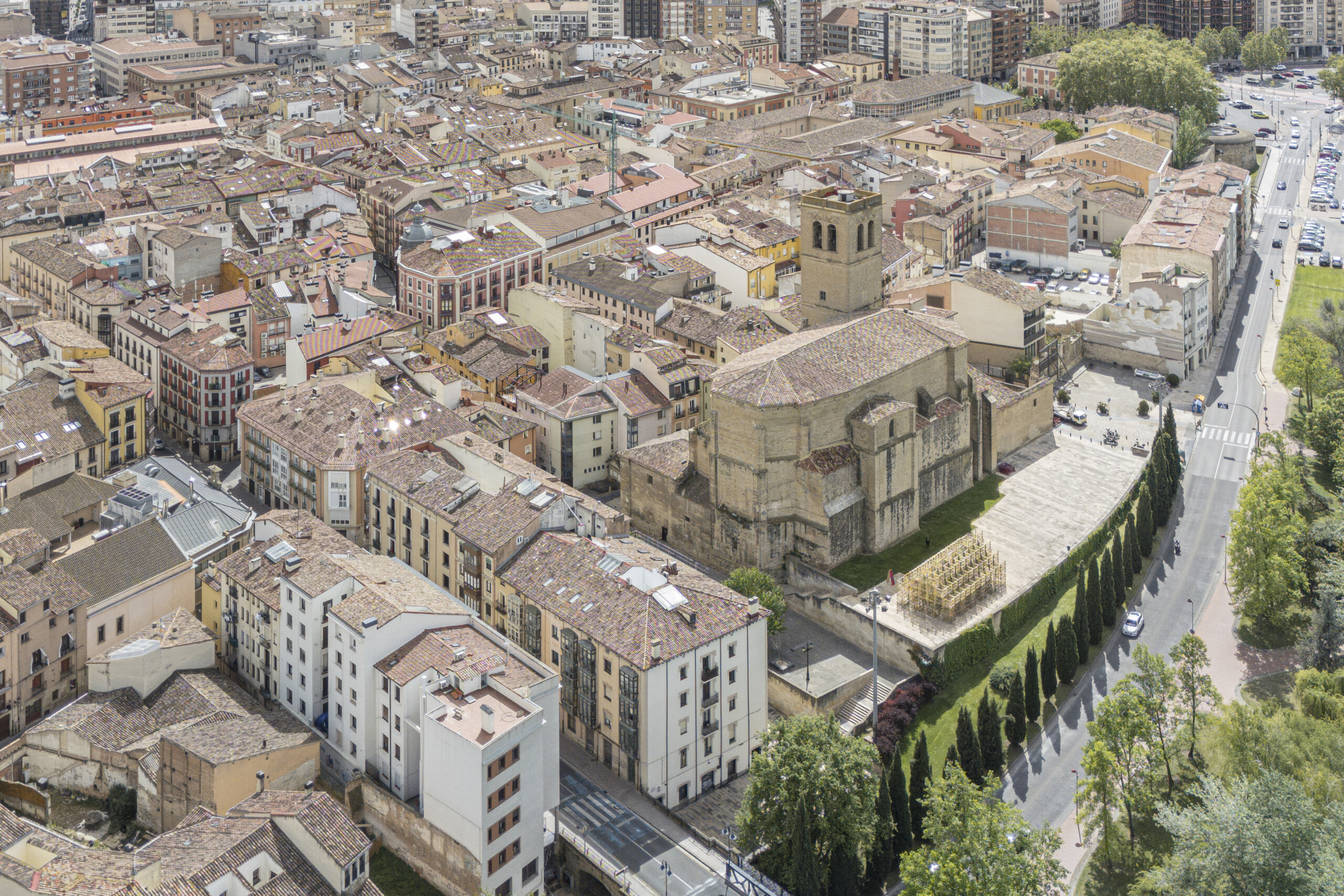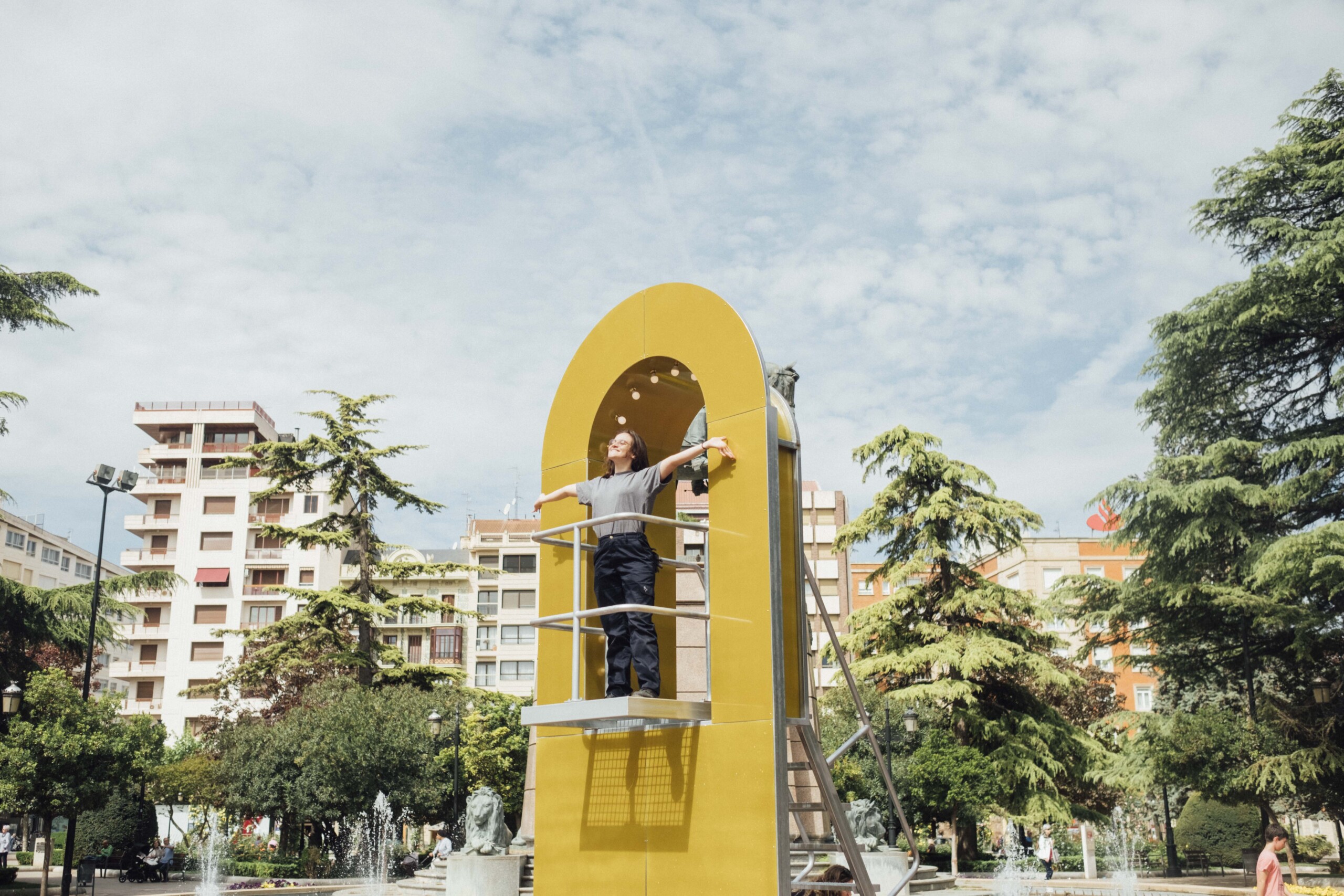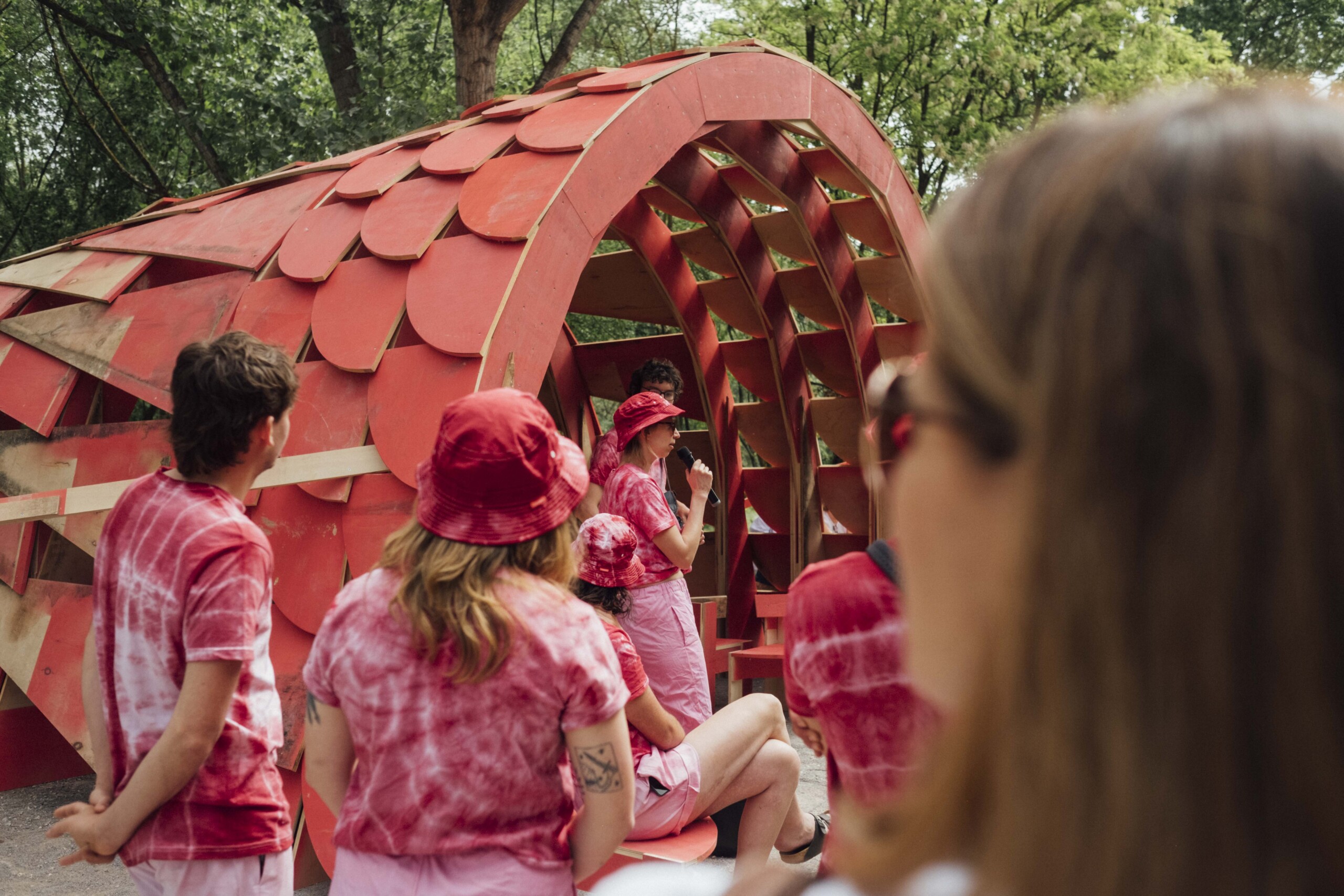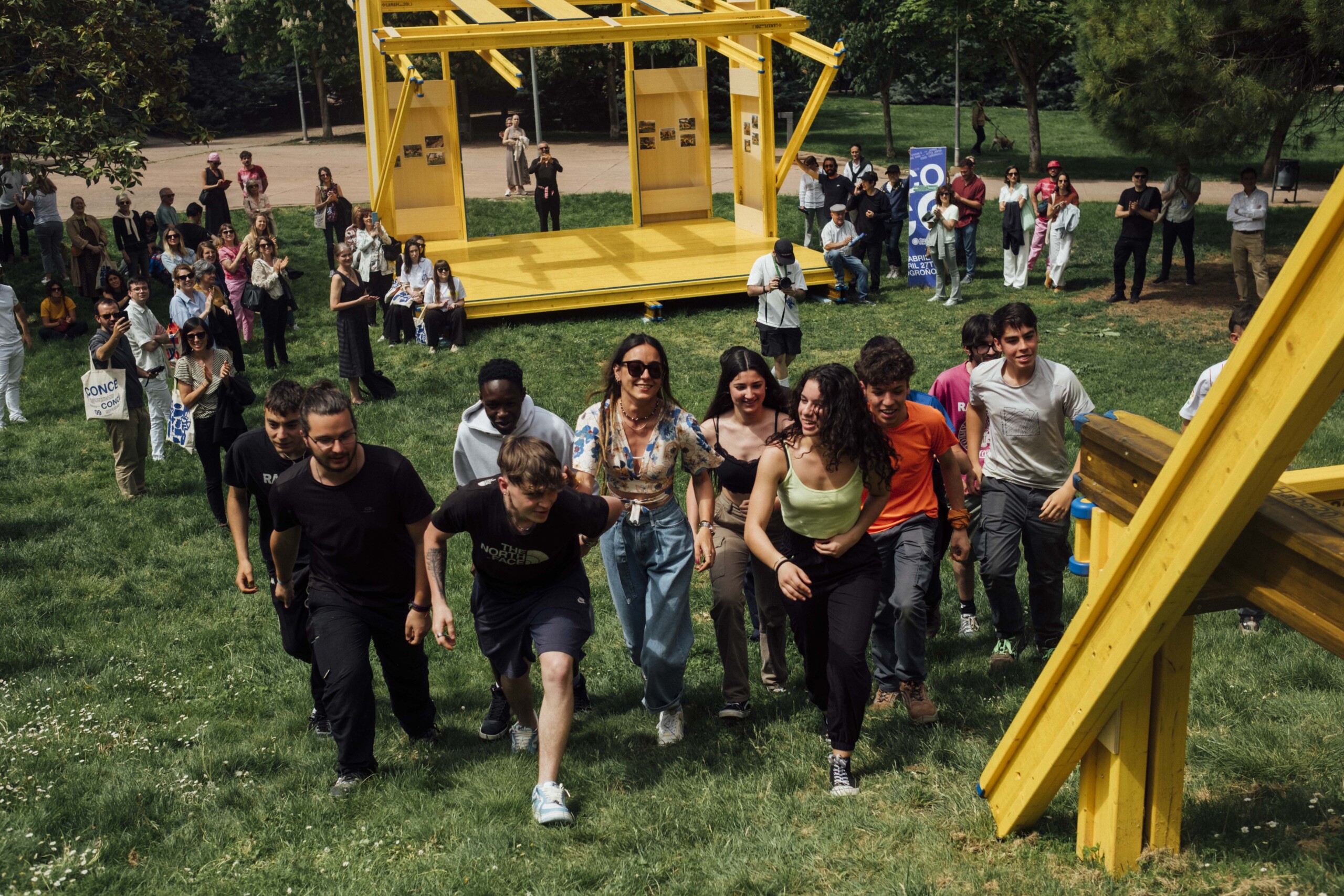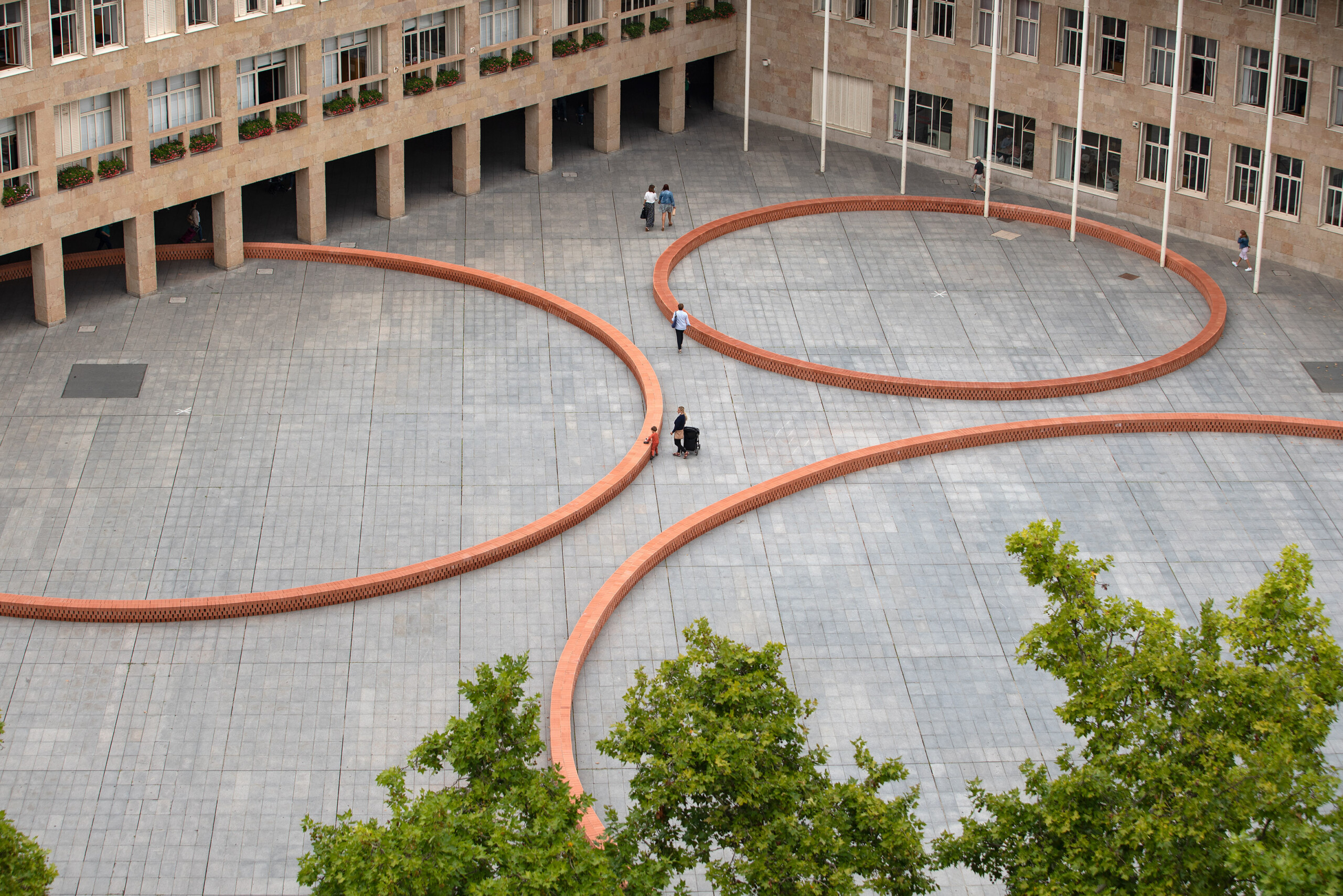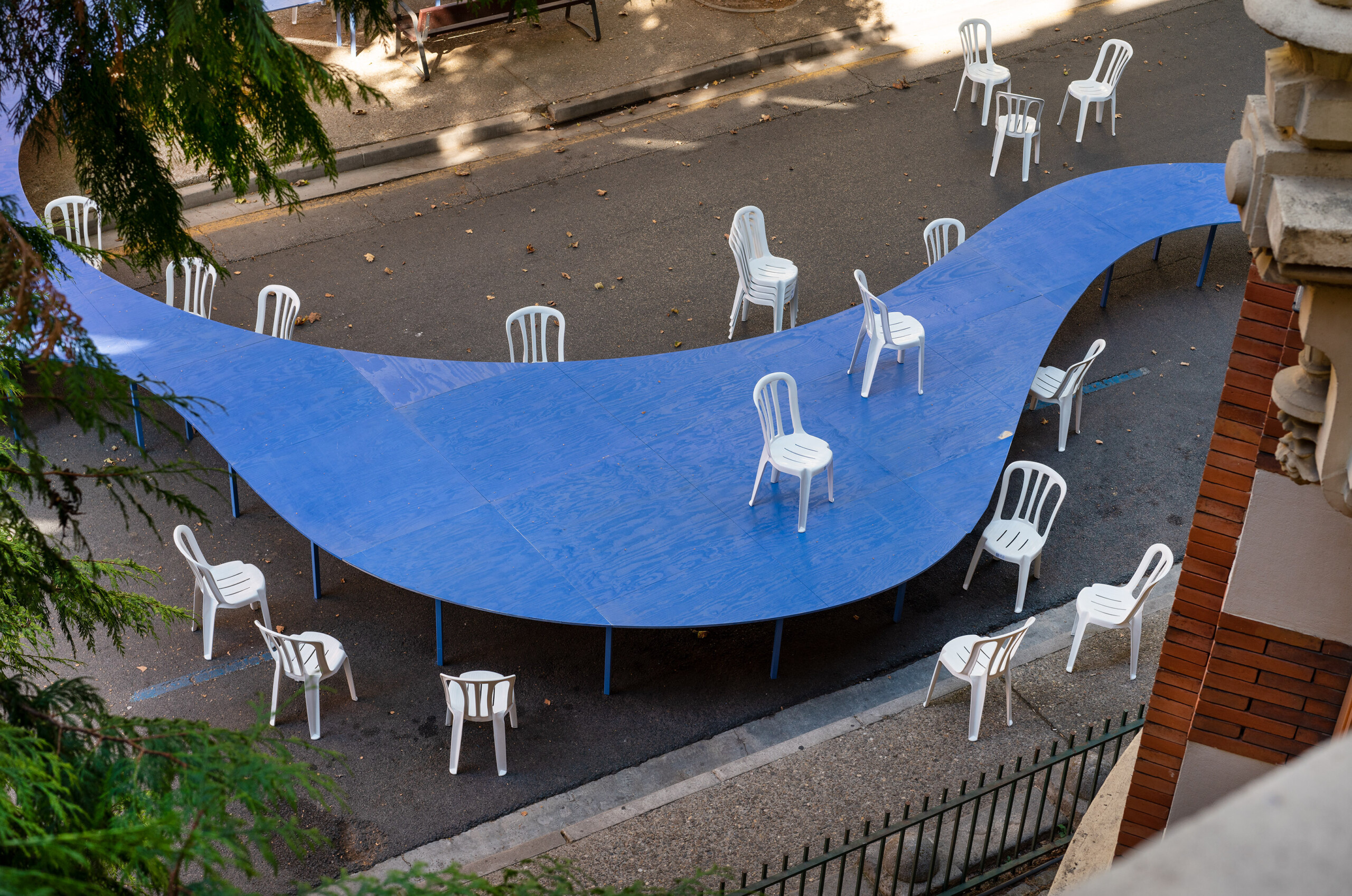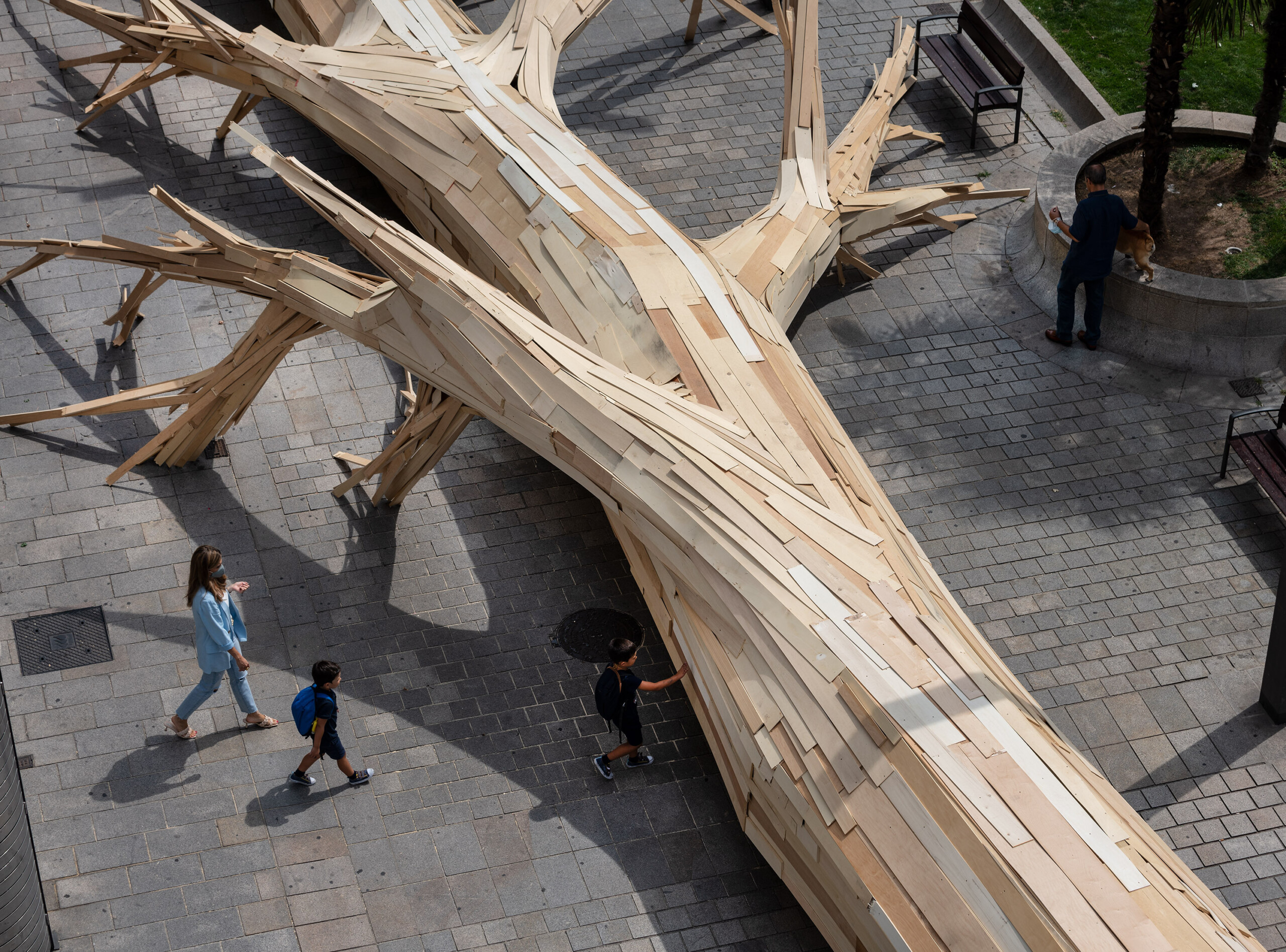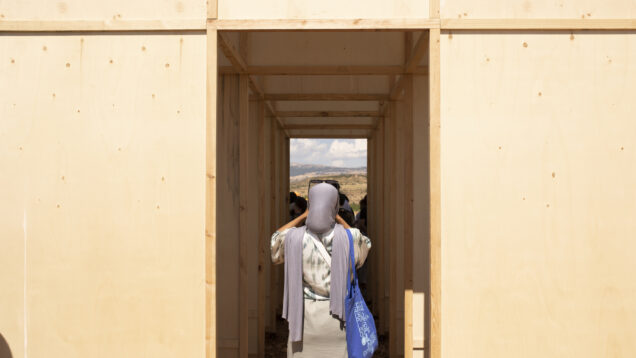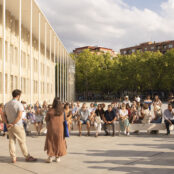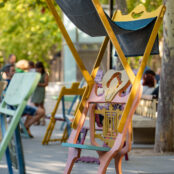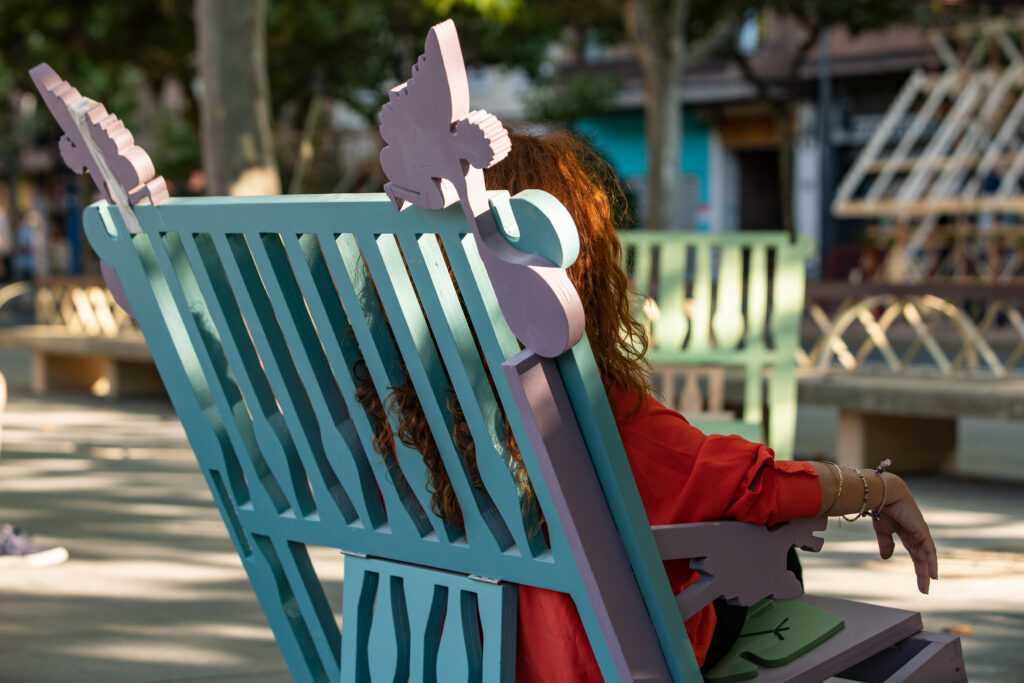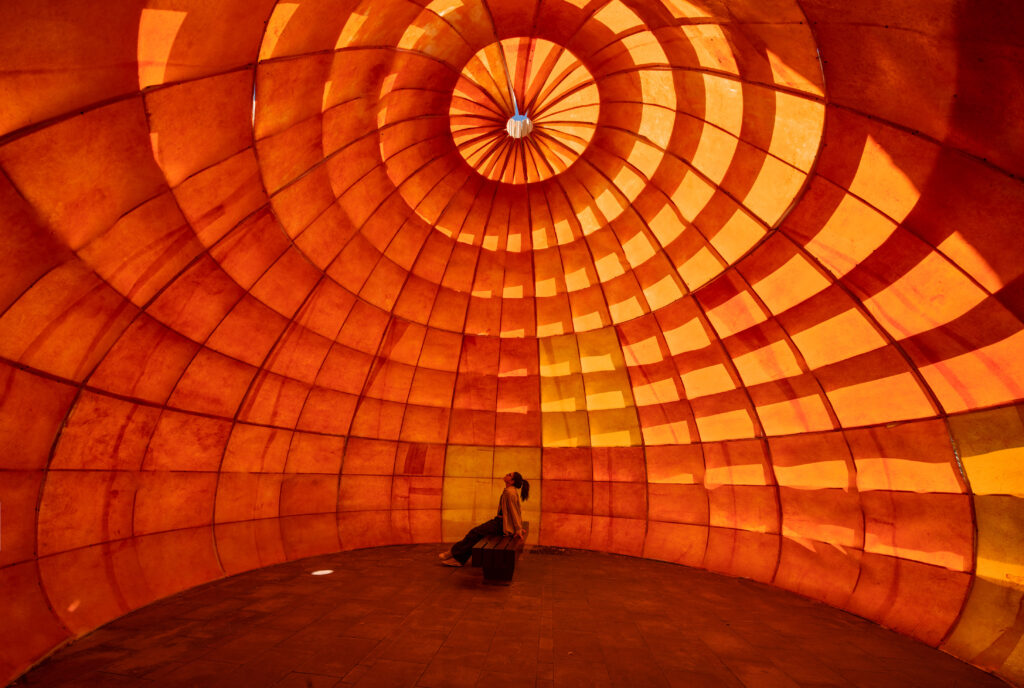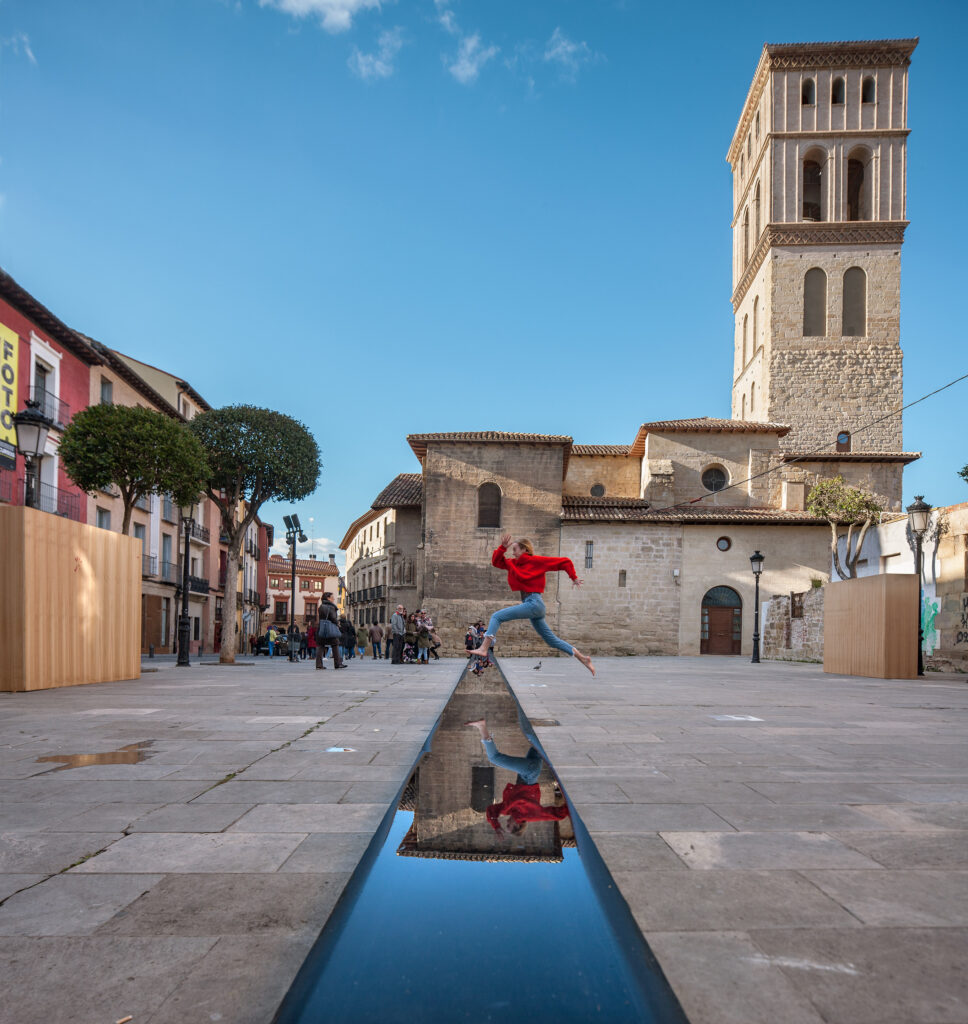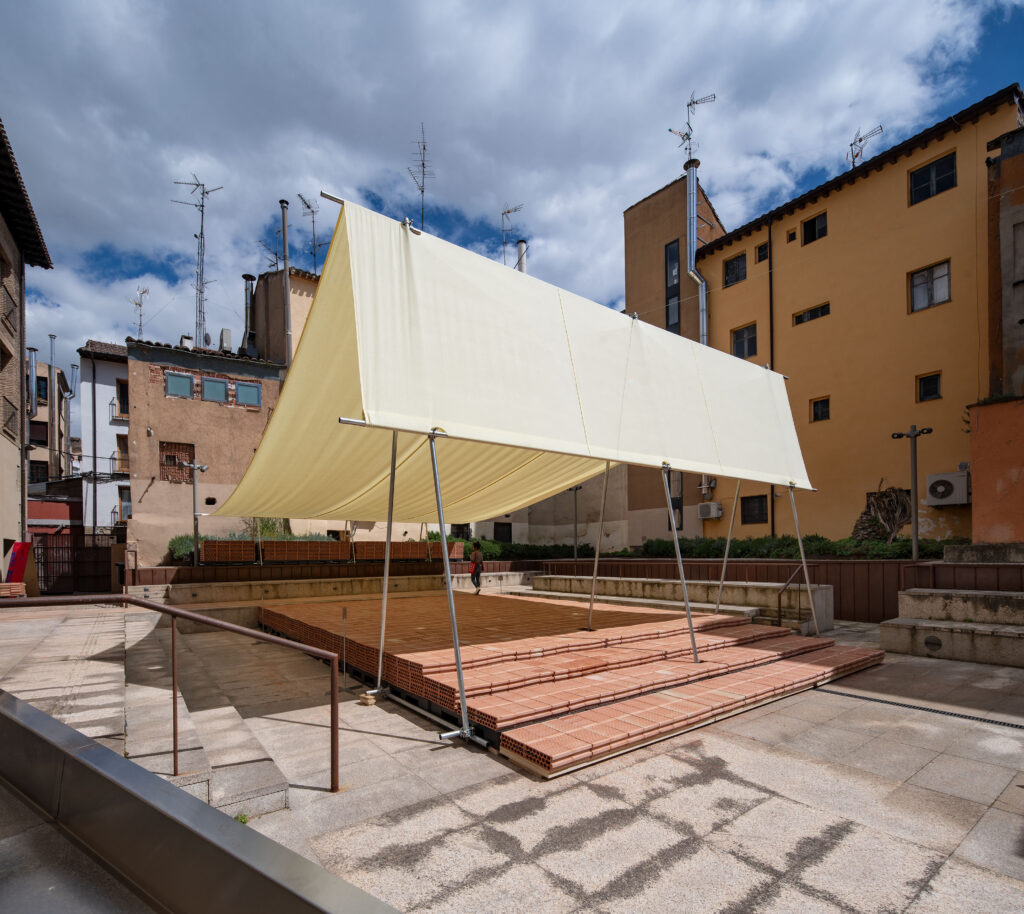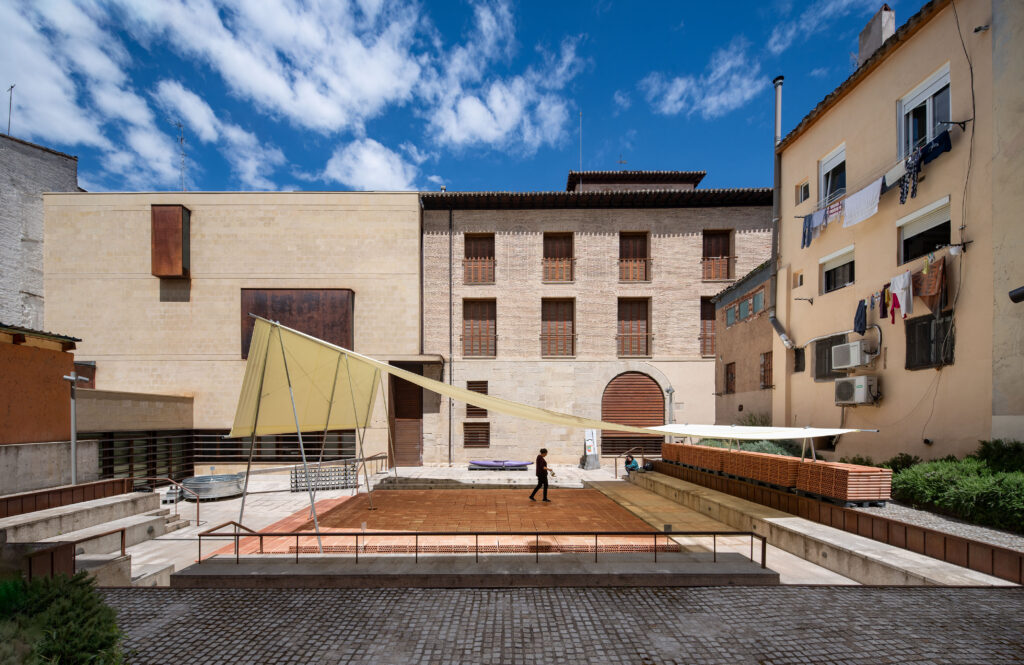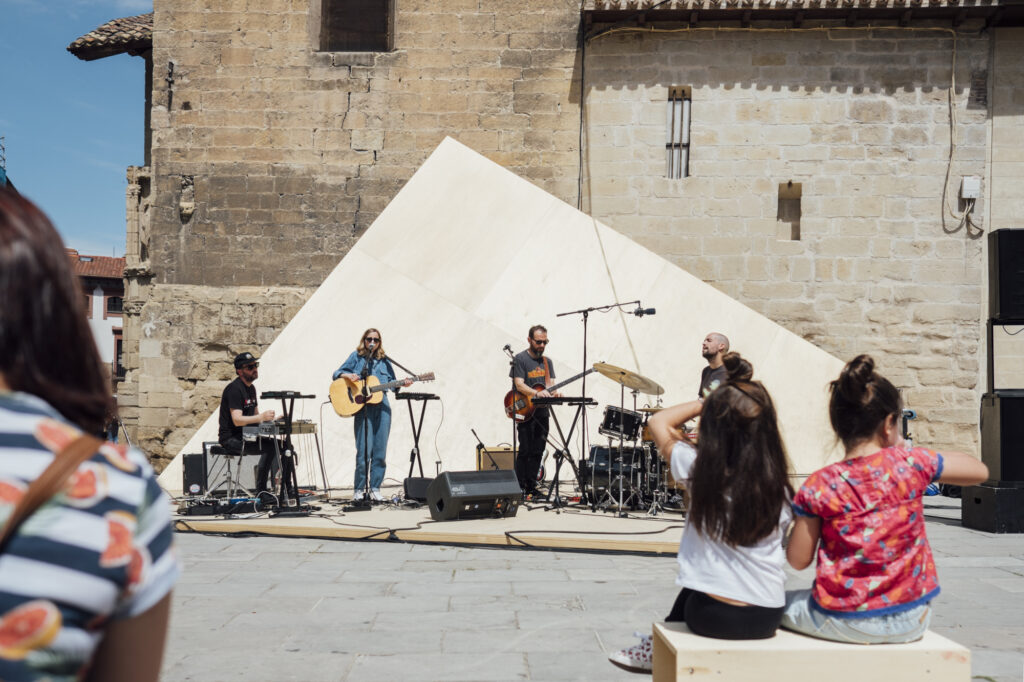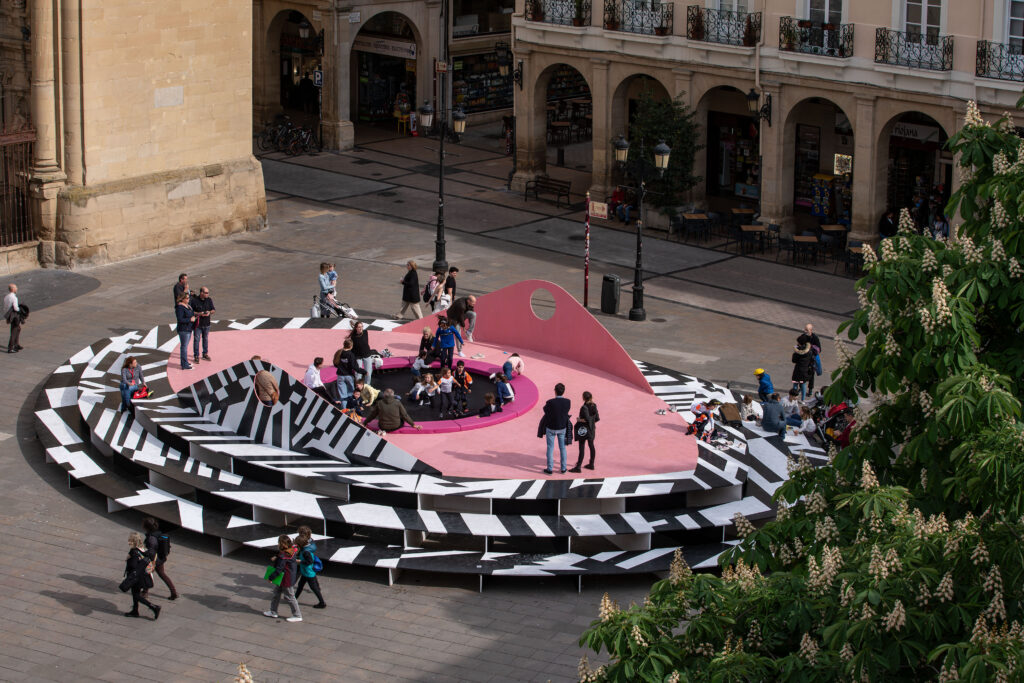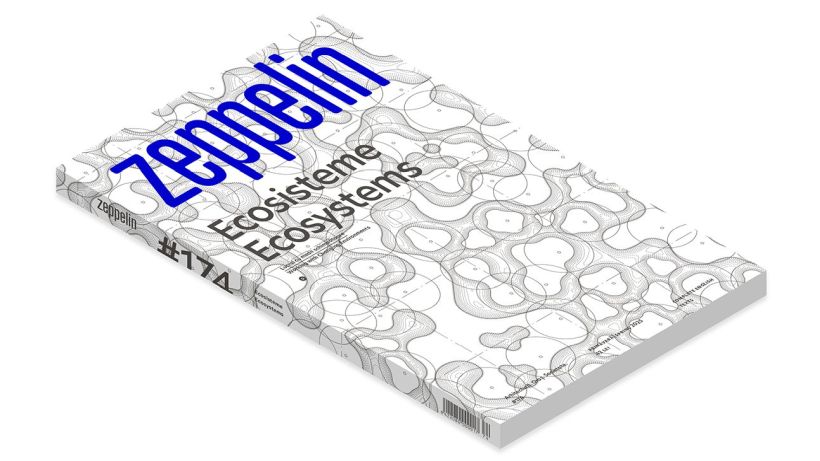Reporter: Cătălina Frâncu
Photo: Josema Cutillas
INTRO
Javier Peña Ibáñez started the Concéntrico festival in Logroño during his student years. From the outset, curiosity and experimentation were the pillars on which the future of this initiative was built—an initiative which now takes place in Madrid and Barcelona, with interventions also in Bucharest. Javier has worked with ministries and civic organisations, curated biennales, and served as the artistic director of several architecture festivals. A significant part of his practice involves architectural education, with teaching roles at institutions including the Istituto Europeo di Design, Universidad Francisco de Vitoria, DMAD, IESP Faculdades (Brazil), Cornell University’s College of Architecture, Art, and Planning (Rome), and the Architectural Association School of Architecture (London). Javier Peña Ibáñez believes in the power of small, community-driven, yet attentive and context-aware gestures to transform the face of architecture and cities.
We spoke to him during Romanian Design Week, following his talk about Concéntrico at the Cervantes Institute, about gentrification, the evolution of the festival, and what the future might hold in a fast-changing world.
Javier Peña Ibáñez was in Bucharest at the joint invitation of the Cervantes Institute and RDW, where he was present with the exhibition Concéntrico.10 years, curated jointly by Javier and Justin Baroncea.
Cătălina Frâncu: Over all the years you’ve curated Concéntrico, have you seen changes in your curatorial approach?
Javier Peña Ibáñez: Of course it has changed! Neither we nor the cities are the same anymore. We’ve always tried to anticipate pressing issues, and today I believe the conversation is mostly centred around climate change—an area we’ve always addressed in the festival. It has gradually emerged as a potential answer to many other issues, making room for nuance. In the book we’re publishing now, we’ve distilled several major themes that we tackle in the festival and our other initiatives. We’re now reordering these themes, and I really like this idea of fiction accompanying our gestures—helping us rise above the harshness of reality and offering a broader perspective. It helps free us from prejudice and to approach things with awareness of local specificities. This analytical capacity offers a general vision.
CF: In this context of climate crisis, what common responses do you see in the cities where you work?
Javier: I think the main climate-related issues in cities are linked to ground porosity and how mineralised they are. We can see the asphalt and pavement right here—the soil underneath is barren. Because of these conditions, cities have been weakened by the priorities they’ve pursued until now. When we started Concéntrico, mayors played a central role in guiding people’s values and emotional connection to place. Nowadays, it’s more about national governments driving the conversation. These have become dominant forces that no longer concern themselves with the small and immediate but rather focus on systemic impact. The current debate is increasingly about military security, which shifts attention away from the local and immediate. That said, broad responses are now harder to generate by the entities that should be dealing with them. Great care needs to be given to particularity.
CF: So should we be helping people to take more responsibility in their communities?
Javier: Yes, for me it’s essential to generate knowledge. To offer tools without being dogmatic, allowing people to act according to their own context. The more voices you listen to, the better the solution you construct. In Spain, there’s a major issue with managing public space and housing between residents and tourists. Even the price of a beer depends on who pays for it—a local who goes to the bar weekly to meet friends, or a tourist who visits once and can afford to pay more. We want to open greenhouses in the city centre of Logroño to demonstrate that free spaces can become places for civic engagement—where people can gather without having to consume. The project is highly adaptable and flexible.
CF: How has the city changed since the festival began?
JPI: The change has been more social and civic than physical. We also have a climate island project aimed at showing how the city can be changed permanently through such interventions. It’s the first step we want to take here, beginning in 2026. It’s a research-based project, a more agile format that can generate other initiatives, like the one we’ve developed for schools. It’s a different way of working with permanence—not so much about the physical, but rather how things function.
CF: When we implement urban improvement projects, there’s always a risk of gentrification. How do you avoid such negative consequences?
Javier: We work extensively with social entities within the city. We aimed to reactivate greenhouses—an effort that has sparked several initiatives. Sure, many locals and tourists alike use and discover them, but because they aren’t based on consumption, they carry community value.
CF: I know you teach, and your practice is strongly informed by real-life engagement. What does the act of educating mean to you?
JPI: It’s true I’ve taught for many years, but recently I’ve scaled back because the other projects have grown so much—I simply travel too often to commit to a full-term course or seminar. So now I focus more on workshops and compact courses. For me, being in touch with new generations is vital—it helps me stay aware of what’s happening across all age and social groups. Education keeps you alert, always paying attention.
CF: If you were to compare your own education to what’s happening in universities today, how would you describe it?
JPI: It was always very demanding. I know my education was very eclectic—from physics to art history—a layered and fascinating mix. It helps me relate to life in a very cross-disciplinary way.
CF: What was the professional hierarchy like back then?
JPI: I think interests have shifted significantly. When we started Concéntrico, there was a big focus on the public image of architectural studios. Today, I think there’s much more awareness of the complexity of reality. We now talk far more about architecture’s social commitments. Nowadays, architecture is increasingly informed by the social sciences and studies on climate change, and it responds more robustly to those kinds of issues. What matters more now is not so much how a building looks, but how it helps alleviate difficult situations. The scale of an architectural object is less important than its impact on its context.
CF: Would you say the role of the architect has also changed?
JPI: Yes, I’d say the architect is no longer meant to play the role of a star. The profession is becoming more horizontal, and the range of career paths for trained architects is expanding. So yes, it has changed.
CF: Would you say we’re at an inflection point in the profession, similar to the Modern Movement?
JPI: I’m not sure—the Modern Movement arose alongside the industrial revolution, a radical change in how things were done. Today, I’d say the social dimension has been involved in architecture for several years, but perhaps not as universally as industrial progress once was. The Modern Movement was also centred in just a few regions—Europe, the US… But today, the world is more decentralised, so it’s harder to disseminate a single idea globally. Plus, many starchitects still design for fame and image, so I’d argue we haven’t yet made that paradigm shift. There are several types of architecture coexisting. I also think it’s cyclical. Authors still have a lot of visibility, while the social and collective side is often obscured by branding and raw capitalism.
And then there’s Instagram architecture. It’s no longer the magazines that dictate what’s trendy—it’s likes and viral videos. That’s something that should be studied, as the consequences could be quite complex.
CF: I’ve noticed that temporary and ephemeral interventions can have a strong impact on how we view heritage, helping to demuseumify it.
JPI: Yes, museumification kills creativity. In cities where heritage is still contested, you see more vibrancy and life. There’s more to be done, so there’s space for experimentation. But in places where the “problem” is considered “solved,” nothing can be touched, which is frustrating—everything remains frozen in time.
CF: Do you have a message for students?
JPI: That everyone should follow their own path. There’s a lot of room for innovation. It’s important not to get attached to any fixed notion of success—it’s meaningless. Success comes when you pay attention to what’s happening around you and respond. I think constant curiosity helps you never fall behind. And constant searching means encountering moments of confusion and failure. That’s a good thing—a mistake is a lesson. We live in a world that always demands speed, clear and fixed solutions. For me, success means being able to take the time to understand things in depth. I always say: the better is the enemy of the good.

